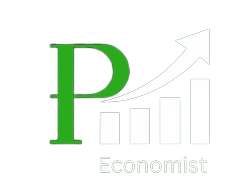Drill, baby, drill!

Adnan Alam Khan
Published date: 06 February 2025
Published in: The News
At the onset of his second term as the president of the United States, Donald Trump has reignited a global debate about the trajectory of his economic policies.
With bold aspirations and an ‘America First’ vision, Trump’s proposed initiatives span from revitalising traditional industries like fossil fuels to spearheading innovation in artificial intelligence (AI). However, his polarising strategies – marked by tax cuts, extensive tariffs, and regulatory rollbacks – pose fundamental questions about winners and losers in the global economy.
The US economy, bolstered during the Biden administration, remains a powerhouse, outpacing competitors in technology, productivity, and growth. Trump’s return to the Oval Office comes with a promise to extend this economic dominance. His proposed policies include billions in AI investments, expansive oil drilling projects, and sweeping tax reductions.
Economists largely agree that the US economy is on track for steady growth, with projections of over 2.0 per cent annual GDP growth. Yet, challenges persist. Inflation remains a significant concern, with rising prices for everyday essentials such as groceries and gasoline. Trump’s reliance on tariffs to reshore manufacturing could exacerbate these price pressures domestically, despite potentially benefiting US-based companies.
While Wall Street shows optimism about Donald Trump’s presidency, economic analysts warn that the broader US economy faces significant challenges, including a ballooning national debt and growing economic inequality.
Experts caution that many Americans are struggling to keep up with rising costs. ‘Americans are paycheck-to-paycheck earners’ and policies that immediately impact prices at the pump and in supermarkets are what matter most to them.
President Donald Trump has declared a National Energy Emergency, a bold move to unlock the vast reserves of oil and gas beneath US soil. This decision aims to fast-track approvals for new energy infrastructure, paving the way for a future defined by energy independence and economic prosperity.
The US boasts the largest reserves of oil and gas globally, yet much of it remains untapped. Trump envisions an era of expansion and transformation, with energy development playing a central role. His administration is doubling down on the slogan ‘Drill, baby, drill!’, a strategy aimed at slashing energy costs for Americans and powering economic growth.
The renewed focus on fossil fuels also risks alienating environmentally conscious voters and investors. However, for Trump, the immediacy of cheaper energy and job creation may outweigh these concerns.
Trump’s administration has launched what he describes as the largest deregulation campaign in US history, surpassing even his previous efforts. Reflecting on his first term, Trump highlighted the “greatest economy America had ever seen”, promising that this time, it would be even better.
Criticising the Biden administration, Trump pointed out that the average American faced an additional $50,000 in regulatory costs during Biden’s tenure. His plan to eliminate 10 outdated regulations for every new one is designed to boost economic freedom, reduce bureaucratic burdens, and return thousands of dollars to American families.
One of the most controversial aspects of Trump’s policy playbook is his reliance on tariffs. Embracing the moniker ‘Tariff Man’, Trump seeks to impose or increase tariffs on major trading partners, including Mexico, Canada, China, and the European Union. The goal? To protect American manufacturing and industrial jobs.
During his first term, many of Trump’s tariffs on Chinese goods were retained by the Biden administration, indicating bipartisan recognition of their strategic importance. Tariffs on steel and aluminium, however, were resolved with key allies like the EU. This mixed approach underscores the delicate balance between protecting domestic industries and fostering global trade relationships.
For Mexico, the stakes are particularly high. With over 80 per cent of its exports destined for the US, new tariffs could severely impact its economy. Similarly, Canada’s industries would face steep challenges under the proposed 25 per cent tariffs. In Europe, Germany – America’s largest trading partner – could lose hundreds of thousands of jobs, as 1.2 million German jobs depend on US exports.
Tariffs may bolster American industries in the short term, but they risk creating chaos abroad, particularly in Europe. The long-term costs of disrupted supply chains and retaliatory tariffs could outweigh immediate gains.
Trump’s trade war with China remains central to his economic vision. By targeting Beijing with tariffs of up to 60 per cent, he aims to reduce America’s reliance on Chinese imports while pressuring China to open its markets. However, China’s countermeasures – leveraging its dominance in raw materials for semiconductors – could escalate tensions further.
The Biden administration had already introduced restrictions on semiconductor exports to China, aiming to curb Beijing’s military advancements. Trump is likely to double down on such measures, signalling a prolonged economic and technological rivalry between the world’s two largest economies. The US-China contest is not just economic; it is also hegemonic. Tariffs are only one part of a broader strategy to maintain US dominance in key technologies and industries.
Economic optimism is already on the rise. Major corporations like Oracle, OpenAI, and SoftBank have announced the launch of Stargate, a $500 billion investment in artificial intelligence infrastructure. Described as the largest AI investment in history, the initiative is expected to create 100,000 new jobs, with Nevada poised to benefit significantly.
Saudi Arabia, a major global energy player, has pledged $600 billion in investments, with Trump encouraging them to increase that figure to $1 trillion. These developments, he argues, are a testament to America’s renewed leadership and influence on the global stage.
On the home front, Trump’s close ties to America’s tech billionaires raise questions about the role of oligarchic influence in shaping economic policies. Figures like Elon Musk and Jeff Bezos, whose companies are integral to both the economy and everyday life, continue to enjoy widespread public trust.
Critics like Bernie Sanders argue that this growing influence of the ultra-wealthy risks deepening inequality. Tax cuts aimed at boosting corporate profits could exacerbate disparities, particularly if they are not accompanied by investments in education, healthcare and infrastructure.
Trump’s economic agenda is ambitious and polarising. While his policies may sustain US economic growth in the short term, their broader implications – both domestically and globally – remain uncertain. For American consumers, lower taxes and potentially reduced energy prices could provide immediate relief. Yet, the long-term costs of ballooning debt, environmental degradation and geopolitical tensions cannot be ignored.
On the international stage, Trump’s ‘America First’ approach risks alienating key allies. Europe, Mexico and Canada face significant economic challenges if tariffs are enacted. Meanwhile, China’s resilience and strategic dominance in critical industries like semiconductors will test America’s ability to maintain its global leadership.
As Trump’s second term unfolds, the world will watch closely to see whether his economic policies usher in a new era of prosperity or deepen existing divides. The US economy may thrive, but the societal and global costs could be far-reaching.
For now, one thing is clear: Trump’s vision – from the Panama Canal to Mars – leaves no doubt about his willingness to think big. But whether this ambition translates into success for all remains the ultimate question.





